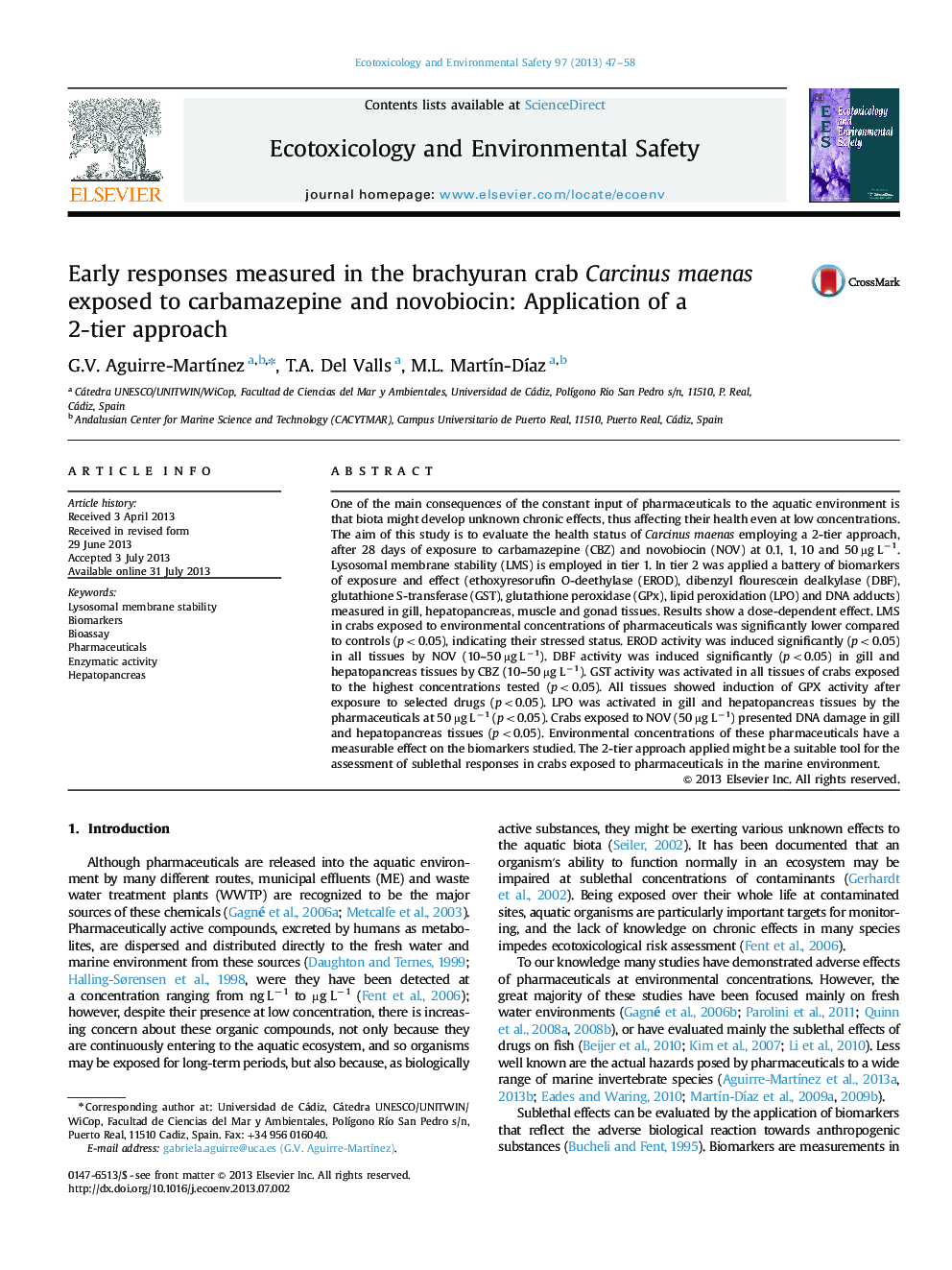| Article ID | Journal | Published Year | Pages | File Type |
|---|---|---|---|---|
| 4420300 | Ecotoxicology and Environmental Safety | 2013 | 12 Pages |
•Evaluation of adverse effects of pharmaceuticals in Carcinus maenas using a 2-tier approach.•Crabs were exposed to dissolved carbamazepine and novobiocin during 28-days.•Significant induction of biomarkers was showed with increasing concentrations.•Most reliable tissues for biomarker analysis were hepatopancreas and gills.•Biomarkers applied are suitable responses for pharmaceutical toxicity assessment.
One of the main consequences of the constant input of pharmaceuticals to the aquatic environment is that biota might develop unknown chronic effects, thus affecting their health even at low concentrations. The aim of this study is to evaluate the health status of Carcinus maenas employing a 2-tier approach, after 28 days of exposure to carbamazepine (CBZ) and novobiocin (NOV) at 0.1, 1, 10 and 50 µg L−1. Lysosomal membrane stability (LMS) is employed in tier 1. In tier 2 was applied a battery of biomarkers of exposure and effect (ethoxyresorufin O-deethylase (EROD), dibenzyl flourescein dealkylase (DBF), glutathione S-transferase (GST), glutathione peroxidase (GPx), lipid peroxidation (LPO) and DNA adducts) measured in gill, hepatopancreas, muscle and gonad tissues. Results show a dose-dependent effect. LMS in crabs exposed to environmental concentrations of pharmaceuticals was significantly lower compared to controls (p<0.05), indicating their stressed status. EROD activity was induced significantly (p<0.05) in all tissues by NOV (10–50 µg L−1). DBF activity was induced significantly (p<0.05) in gill and hepatopancreas tissues by CBZ (10–50 µg L−1). GST activity was activated in all tissues of crabs exposed to the highest concentrations tested (p<0.05). All tissues showed induction of GPX activity after exposure to selected drugs (p<0.05). LPO was activated in gill and hepatopancreas tissues by the pharmaceuticals at 50 µg L−1 (p<0.05). Crabs exposed to NOV (50 µg L−1) presented DNA damage in gill and hepatopancreas tissues (p<0.05). Environmental concentrations of these pharmaceuticals have a measurable effect on the biomarkers studied. The 2-tier approach applied might be a suitable tool for the assessment of sublethal responses in crabs exposed to pharmaceuticals in the marine environment.
